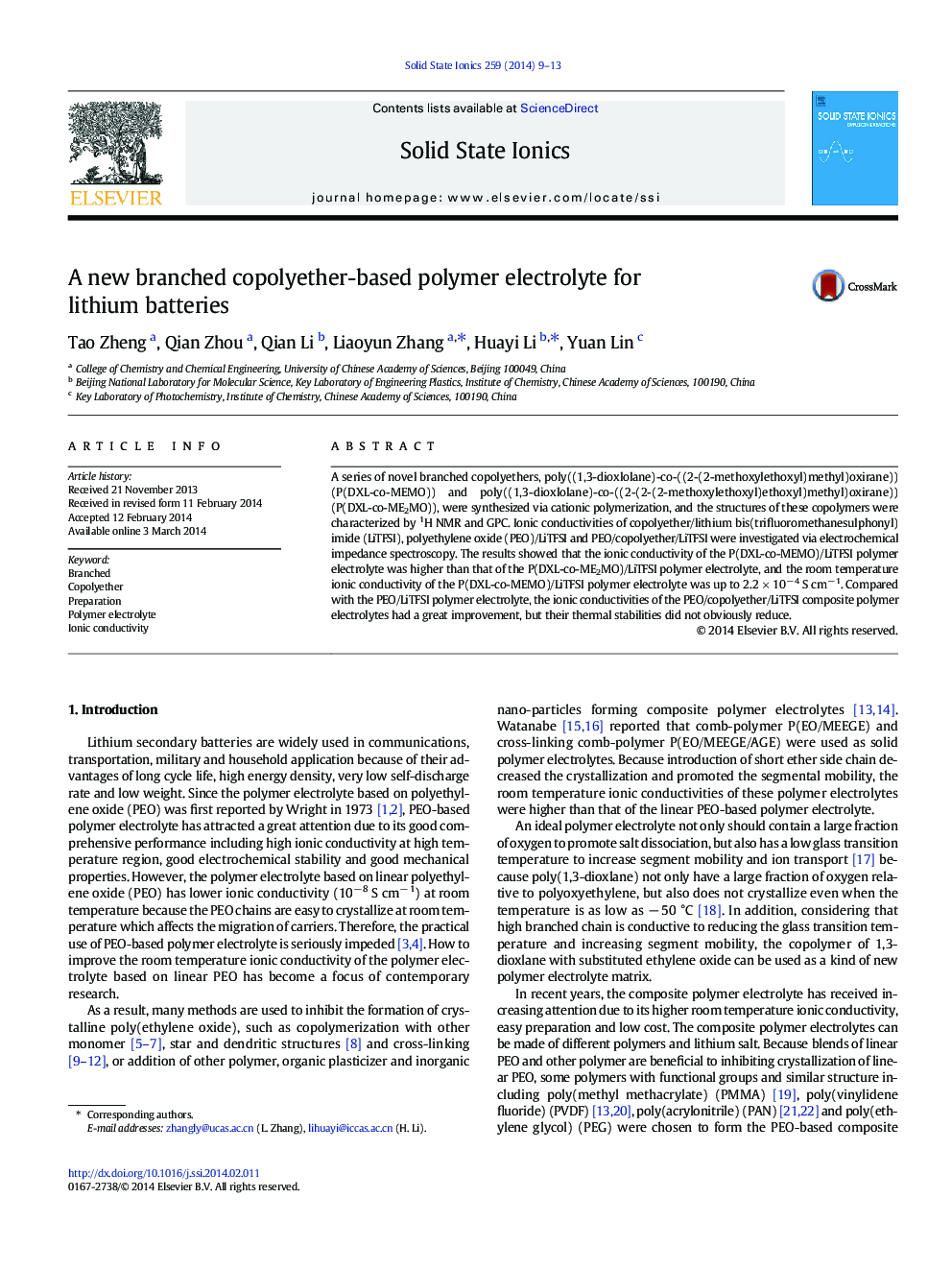| Article ID | Journal | Published Year | Pages | File Type |
|---|---|---|---|---|
| 1293928 | Solid State Ionics | 2014 | 5 Pages |
•A series of novel copolymers were synthesized via cationic polymerization.•The ionic conductivity of polymer electrolytes has large improvement.•These polymers and PEO matrix have good compatibility.•The good compatibility can evidently promote ion migration.
A series of novel branched copolyethers, poly((1,3-dioxlolane)-co-((2-(2-methoxylethoxyl)methyl)oxirane)) (P(DXL-co-MEMO)) and poly((1,3-dioxlolane)-co-((2-(2-(2-methoxylethoxyl)ethoxyl)methyl)oxirane)) (P(DXL-co-ME2MO)), were synthesized via cationic polymerization, and the structures of these copolymers were characterized by 1H NMR and GPC. Ionic conductivities of copolyether/lithium bis(trifluoromethanesulphonyl)imide (LiTFSI), polyethylene oxide (PEO)/LiTFSI and PEO/copolyether/LiTFSI were investigated via electrochemical impedance spectroscopy. The results showed that the ionic conductivity of the P(DXL-co-MEMO)/LiTFSI polymer electrolyte was higher than that of the P(DXL-co-ME2MO)/LiTFSI polymer electrolyte, and the room temperature ionic conductivity of the P(DXL-co-MEMO)/LiTFSI polymer electrolyte was up to 2.2 × 10− 4 S cm− 1. Compared with the PEO/LiTFSI polymer electrolyte, the ionic conductivities of the PEO/copolyether/LiTFSI composite polymer electrolytes had a great improvement, but their thermal stabilities did not obviously reduce.
